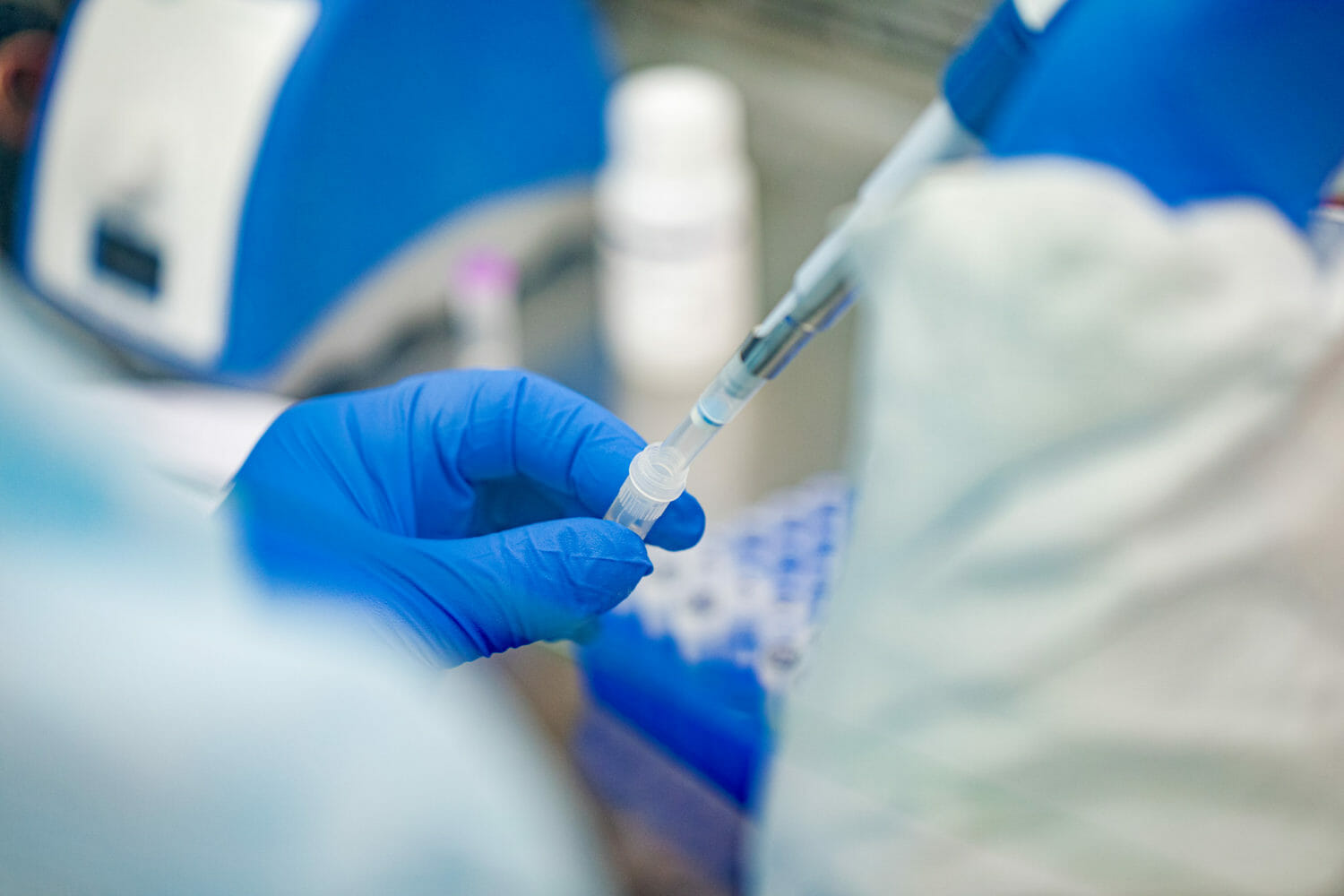We talk drug cocktails, face masks and public policy with an ICU doctor treating patients fighting coronavirus infection.
Dr. Raj Batra is an L.A.-based pulmonologist and translational physician-scientist whose research focuses on biological therapies for lung cancer. The former UCLA doctor now treats locals at the Desert Regional Medical Center in Palm Springs where he has been part of the team that handles coronavirus patients.
Due to the advanced age of many of the people living in Palm Springs, that area has seen an influx of COVID-19 patients as the novel coronavirus seems to afflict senior citizens the hardest. As of the first week of April, Palm Springs has tallied 60 confirmed cases and 8 deaths from the virus.
“Yes, this is a pretty vulnerable population,” Batra says in a slow, thoughtful pace. Exactly as you’d expect from an experienced physician who has been practicing in Southern California since 1998. “We have a lot of older people. We also have our share of immunocompromised people.”
Quickly, the discussion turns to hydroxychloroquine, the suddenly controversial drug used to treat malaria, lupus and rheumatoid arthritis. When used with the common antibiotic azithromycin, aka a Z-pack, some believe hydroxychloroquine — or Plaquenil as it is known commercially — can treat COVID-19. President Donald Trump says he may try it himself, tweeting that the chemical cocktail has “a real chance to be one of the biggest game changers in the history of medicine.”
Despite a lack of evidence citing its effectiveness, Trump told reporters at the White House that he thinks people should take it. “If it were me, in fact, I might do it anyway,” he said. “I may take it … I have to ask my doctors about that. But I may take it.”
The hydroxychloroquine buzz began after results from a small French study of 20 patients was released, not in a science journal, but on YouTube. The research team, lead by Dr. Didier Raoult in Marseille, France, boasted a “viral load reduction/disappearance in COVID-19 patients” when hydroxychloroquine was administered. According to the study, azithromycin boosted hydroxychloroquine’s effectiveness in fighting the virus.
“The problem with that trial was they were only following patients on general medicine wards, and once patients left that ward they were no longer being followed,” Batra says. “It turned out about a half dozen of the patients that were on the azithromycin and hydroxychloroquine actually ended up in the ICU or ended up dying. And they didn’t include that in their final analysis. So people started questioning them, basically.”
Critics also note the small size of the study and the lack of a double blind test. They also question why Raoult has yet to publish the raw data from the trial.
“That’s why clinical trials are necessary,” Batra says. “Besides, there are risks in combining the drugs. There are some cardiac risks.”
But as patients get sicker and doctors run out of options, Batra says he and his colleagues will turn to whatever they can to save lives, including using Plaquenil. And he doesn’t think they are alone.
“I think that many physicians have been using hydroxychloroquine to try to slow down the viral replication,” he says. “But they’re only using it for four or five days. If people get worse, despite all that, there’s no sense of keeping it on board.”
Maybe the drug cocktail won’t be such a game-changer after all.
“I’ve had patients on hydroxychloroquine end up in my ICU,” he says. “Maybe I end up seeing the worst of the bunch.”
But he is not counting the drug out. Batra, you see, works in intensive care. When patients get to him, they are in an extremely serious condition. What works for someone showing mild symptoms may not work on those with an advanced condition.
“Maybe I have a biased perspective,” he says. “Maybe the people who are in the outpatient setting or in the general ward setting are seeing more success stories than I am.”
So maybe Plaquenil is better at preventing COVID-19 from getting out of control for people in the early stages of the disease? And maybe not so much by the time they make it to the ICU?
“That’s a reasonable way of restating it, yeah,” he says.
Seeing as more than 100 doctors and nurses have died worldwide from COVID-19, should doctors take hydroxychloroquine to prevent infection?
“That’s a great question,” Batra says. “In fact, what I have heard through the latest news reports is that there are some physicians doing exactly that. They’re either holding onto hydroxychloroquine or prescribing it to their family members. I don’t know what that experience is.”
Since there are so few alternatives, Batra says he cannot fault a doctor for taking Plaquenil — even if the risks may outweigh any potential benefits.
“It has the ability to slow down conduction through the heart and that can sometimes lead to, perhaps, lethal arrhythmias,” he says. “The other thing is this drug can bring about a hemolytic anemia in those patients that have G6PD deficiencies.”
Citing a lack of clinical trials, the nation’s leading expert on infectious diseases, Dr. Anthony Fauci, hesitates to recommend the Plaquenil/Z-pack cocktail. And according to one report, his reluctance to support the “game changer” drug has frustrated the president’s economic adviser, Peter Navarro.
“Dr. Fauci is — you’ve got to understand — he’s a giant in our field,” Batra says. “I’m not an infectious disease doctor, but I’ve been hearing about Dr. Fauci for 30 years or more. As to his commitment, as to his work ethic and his ability to make sense of complex physiological problems.”
What Fauci represents, according to Batra is “the way things are classically done.” On the other hand, “What Trump represents is sort of an experimental approach,” he says, “which is if you don’t have anything else to offer, here’s something, perhaps, you can try. You can also take that approach too far. And other countries do do that. That’s why the FDA and all of these regulatory agencies came into play so that people weren’t literally able to sell snake oil to treat disease without any semblance of benefit.”
As for self-medicating, Batra says he has not tried hydroxychloroquine and hasn’t asked any of his colleagues if they have.
“I’m not that curious,” he says. “I think, frankly, we’re just trying to protect ourselves the best we can with protective gear and hoping that we don’t get into a situation where we’re worrying about our health … It’s not something I dwell on. I don’t think a lot of people dwell on it.”
Recently, British Prime Minister Boris Johnson tested positive for COVID-19 and spent time recovering in a London ICU. After a few days, he was removed from intensive care and is reportedly in “extremely good spirits.”
Entering the ICU isn’t the death sentence many COVID-19 patients fear. Batra has seen many different outcomes in Palm Springs.
“I’m only speaking about patients that I have seen in the ICU,” he says. “We’ve had several elderly patients who have passed from COVID-19. We have several who are on the ventilators … and we’ve had two or three who have been able to leave the ICU and hopefully move to convalescence and ultimately become immune to COVID.”
Batra notes that patients who have been able to bounce back from their stay in the ICU tend to be younger and have good overall health. “They have been able to mount an immune response that has enabled them to, basically, put out the fire that the virus was causing within them,” he says.
No matter how successful he and his team have been, any time they are met with failure, it gets to them.
“I think, as physicians, we dwell on the fish that got away,” he says. ” … I think we dwell more on our failures than our successes, just because we expect success and failures seem to be a lot more haunting.”
Over the last month, Batra says the Desert Regional Medical Center developed organized and predictable processes in dealing with COVID-19 patients. This has lessened the stress on the doctors and nurses.
“The first time we went in, we were a lot more tentative,” he says. “Just like in the movies where people are trying to avoid Ebola. But now, we have a systematic, streamlined process. We just go about putting on our gear and getting the equipment together and doing the job. I think that that aspect of it — that proficiency itself — allows for patients to receive support that they badly need a little bit earlier and a little bit safer. But patients, when they crash, they crash really, really hard and it’s scary every time.”
The Palm Springs facility has not reported the same shortages in equipment that other medical centers have experienced. Batra says that might be because Southern California had the benefit of learning how to prepare as the pandemic raged elsewhere. They’re also not throwing away used gear.
“We’ve been anticipating this, so we have been using the masks and the shields on a repeated basis,” he says. “We try to clean them up as best as we can with alcohol wipes and bleach or whatever’s available and try to reuse that stuff.
In an effort to curb the spread of the coronavirus, L.A. Mayor Eric Garcetti and the Centers for Disease Control and Prevention recommend people wear face coverings while in public spaces. Garcetti has taken that recommendation further and ordered residents must wear face coverings in grocery stores and other essential businesses.
Riverside County, which includes Palm Springs, also ordered residents to cover their faces while in public, and gave police officers the power to enforce the order “as they deem necessary.” Riverside Sherrif Chad Bianco says deputies won’t hand out citations for not wearing a mask in public but urged residents to follow the order to the best of their abilities.
Meanwhile, Trump says he does not want to wear a mask. Where does Batra stand? His answer is part scientific, part diplomatic.
“Given that this is an infectious agent,” he says, “I think it’s a reasonable public health maneuver to try and reduce the burden. But I also appreciate the president’s sentiment because he feels, ‘Well, I don’t think it will help me.’ And scientifically, you can’t prove that it helps anything. But the public health people will say, ‘But we are trying to mitigate public risk.’ And they would be right, too.”
Despite his experiences over the last few weeks, Batra says there’s plenty more for him and the medical community at large to learn about fighting back against the virus.
“I think there’s so much about this that nobody knows, frankly. That’s the reason it’s novel,” he says. “One thing I would say is that people do look out for each other. I just hope we get to the point where we have enough people who develop an immunity to this that they can take care of the rest of us who are still vulnerable and susceptible to this.”
Like Mr. Johnson?
“Ultimately, I think what Boris Johnson was trying to do was adopt that approach,” he says, ” … And, unfortunately, he’s in the hospital now trying to develop his own individual immunity.”
Finally, what is Batra’s take on the tiger from the Bronx Zoo that contracted the virus? Was he surprised by that development?
“I heard about that on NPR this morning,” he says. “It did surprise me, but I guess if it can hop over from bats to humans, it can hop over from humans to tigers. I hope Nadia gets well soon.”

